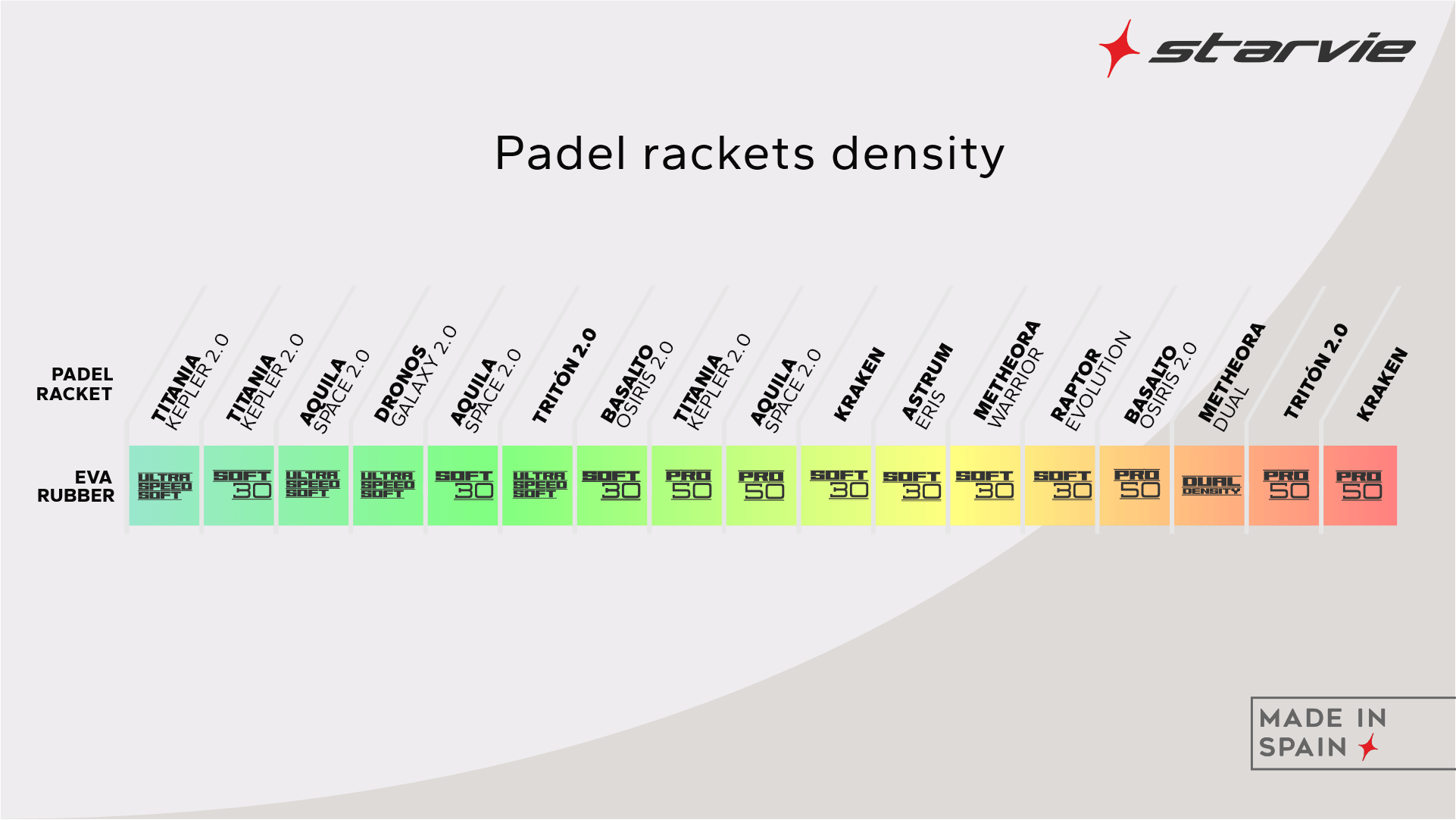Differences between hard and soft density, which racket should you choose?
Let’s look at the differences between hard and soft rackets, according to the type of EVA rubber density we use in the StarVie factory and their features in the StarVie collection models. We present a comparative table from the softest racket to the hardest racket in the collection, according to the different types of EVA rubber. It would be a mistake to say that one type of racket is better than another, because racket choice is something very personal and depends not only on your feelings as a player, but also your type of game, your most characteristic strokes and your physical condition.
Hard or medium-density padel racket features
Hard or medium-density padel racket features: this type of racket will give you more control and power when playing your game. In our collection you can find two medium density rubbers: Pro 50 and Dual Density.
Advantages:
- Control: although the sweet spot is smaller, when holding a medium-density racket your feeling of security when making each shot will increase noticeably.
- Power: it’s important to take into consideration that the technique and strength of the player favours the execution of strokes with greater force. Therefore, a hard or medium-density racket will help you play strokes with less effort, as it doesn’t absorb the impact of the ball as much, giving it more speed and bounce.
It’s a factor to take into account if you like the sweet spot to be small, as a hard racket will give you a better feeling of balance on the court.
In our new StarVie padel racket collection you can find medium-density models (hard rackets) providing us with each and every one of the previously mentioned characteristics: Tritón Pro 2.0 or Metheora Dual, which has a rubber of different densities.
Soft Padel Rackets features
Soft racket features: this type of racket will offer you, above all, greater ball output, efficiency when playing each stroke, and a correct absorption of the same. In addition to our Soft 30 rubber, we incorporate in this collection the Ultra Speed Soft rubber, an ultra soft rubber.
Advantages:
- Efficiency and ball output: it is a soft racket, where the rubber is more flexible, so the output of the ball will be much greater. That’s to say, you’ll be able to execute higher performance shots where the ball output is faster with less effort.
- Correct shot absorption vibrations for greater comfort when playing shots. In addition, with high elasticity rubber, the shots will be cushioned in the racket rather than the elbow, which will help you avoid injuries like epicondylitis, commonly known as ‘tennis elbow’.
It’s important to keep in mind that soft rackets give off less as they absorb shots more easily. In the StarVie padel racket collection you can find the following soft density rackets: Basalto Osiris 2.0, Dronos Galaxy Speed 2.0, Titania Kepler 2.0 or Aquila Space Speed 2.0.
IMPORTANT FACTORS WHEN CHOOSING THE PERFECT PADEL RACKET
It’s not that one racket is better than another, but that each of them has certain characteristics that differentiate them. As a player, you’ll have to find the racket that best suits your style of play, the one you feel most confident with and can develop your skills more efficiently.








Do not forget also that temperature is also very much of influence in choosing soft and hard. As temperature gets higher (over 25 degrees) harder foam, will become more soft and is better suited for this situation. If you would play with soft in warm temperatures, the foam will become too soft and you will loose all control of the ball. The opposite applies for cold temperatures (many times this is the case in the northern countries).
Also with slow balls the soft foam will give you more power but on harder balls, hard foam is better to accelerate the ball.
Best regards,
Marcel Bogaart